Share
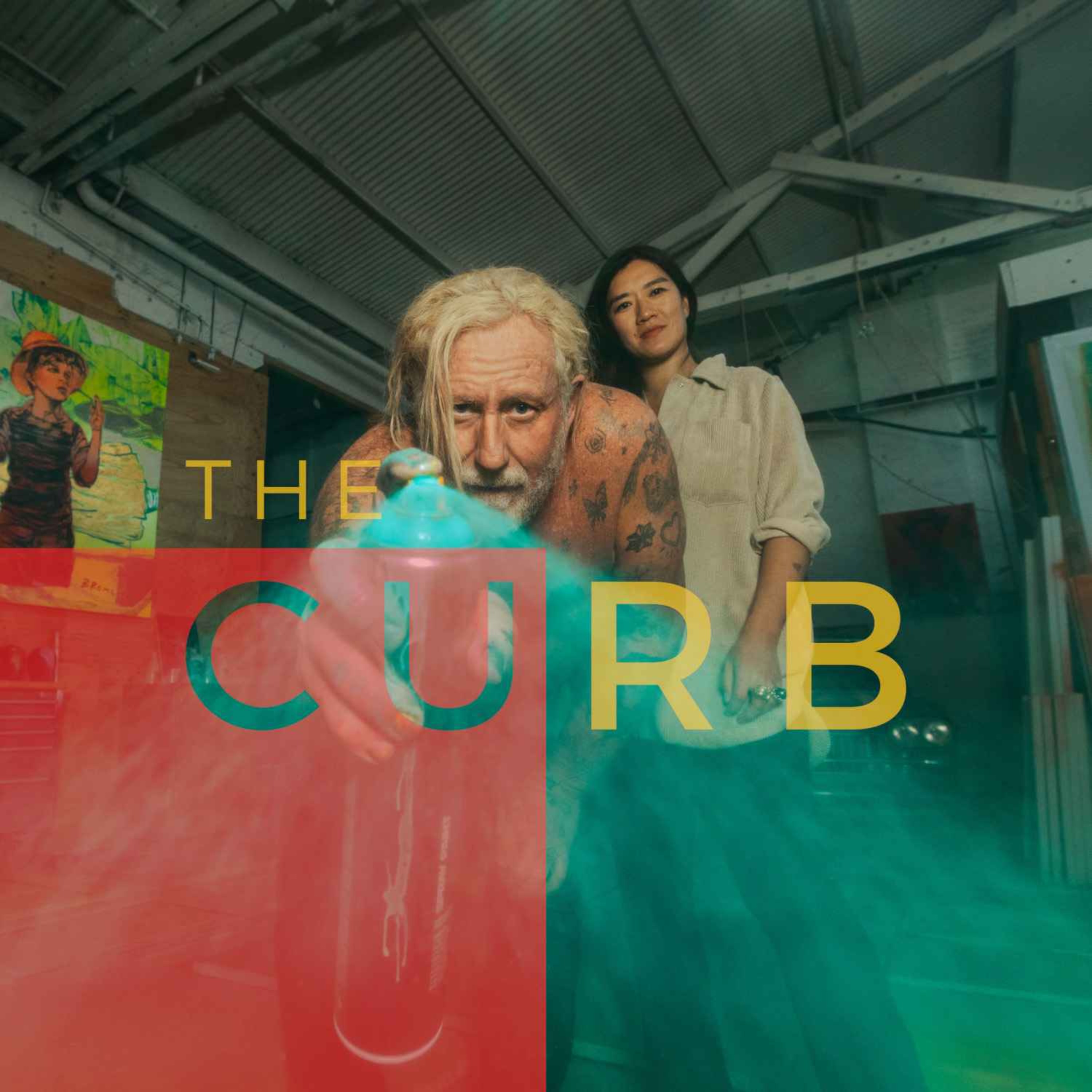
The Curb
Bromley: Light After Dark - David & Yuge Bromley and Director Sean McDonald Chat About Creating a Space for Open Vulnerability in This Interview
Every so often a presence swirls into our lives in an unexpected manner and changes it just a little bit. For many Australians, whether they be wealthy or not-so-wealthy, that presence is David Bromley. Here is a celebrated artist whose work features on the walls of galleries and private art collectors, while the same artwork adorns cologne labels, reusable water bottles, and more.
As mentioned in Sean McDonald's raucous and energetic documentary Bromley: Light After Dark, in Australian cinemas from today, David's work gives people hope, and hope is not something that should be restrained for those who want to access it by how much money is in your bank account. What this means for Bromley as an artist is that his work is everywhere. His critics would say he's overproduced and mass marketed, while his supporters - myself being one of them - would say that he's making high art accessible to all.
Either way you look at it, a David Bromley art piece is a slice of his personality, and through Bromley: Light After Dark that we get to see that personality writ large on the cinema screen. Here is a person that's larger than life, full of energy, and supported by a loving family who champion his work and give his mind the space to be what it is: an ever roaming, occasionally anxious, place of darkness that, thanks to a wealth of soul-searching and self-realisation, has been splashed with enough bright paint that it has become a source of lightness and joy. It is, quite simply, the light after dark.
There's an openness and a frankness to David Bromley as a person that encourages people in his orbit - and that includes the audience watching this documentary - to feel ok about sharing who they are as people. Watching Bromley: Light After Dark made my partner and I feel seen in an way that precious few films have made us feel. In one sequence, David and his wife Yuge drive a roller over his artwork to create a weathered aesthetic. It's one of the many moments that show creativity let loose. It's bloody energetic and entertaining, and it's done by two people who love and support each other in their creative endeavours.
Thanks to the work that I do with The Curb, I get to chat or write about the plentiful creative minds that exist within Australia. I'm always in awe of their creative spirit, and how people manage to express themselves in a country that sometimes wilfully rejects creativity. For creative souls, there is a need to pour yourself into your work, and that need comes with a wealth of vulnerability. Allowing the melding of a creative mind like a documentarian to play with that vulernability amplifies that openness even more. It's that line of questioning which I put forward to Sean McDonald, David and Yuge Bromley in the following interview.
As you'll hear, giving David a brief questions opens up a well of ideas and possibly responses. There is a level of generosity that comes with his answers, and I'm grateful that I was able to discuss his work with him.
The following interview was recorded on the day of the Optus outage, so there are some occasional audio blips, but the essence of the discussion is still there. I begin by talking about the film with Sean, followed by the arrival of David who brings his own perspectives.
Bromley: Light After Dark is cinemas from today and deserves to be seen on the big screen. To listen to previous interviews, visit TheCurb.com.au.
More episodes
View all episodes
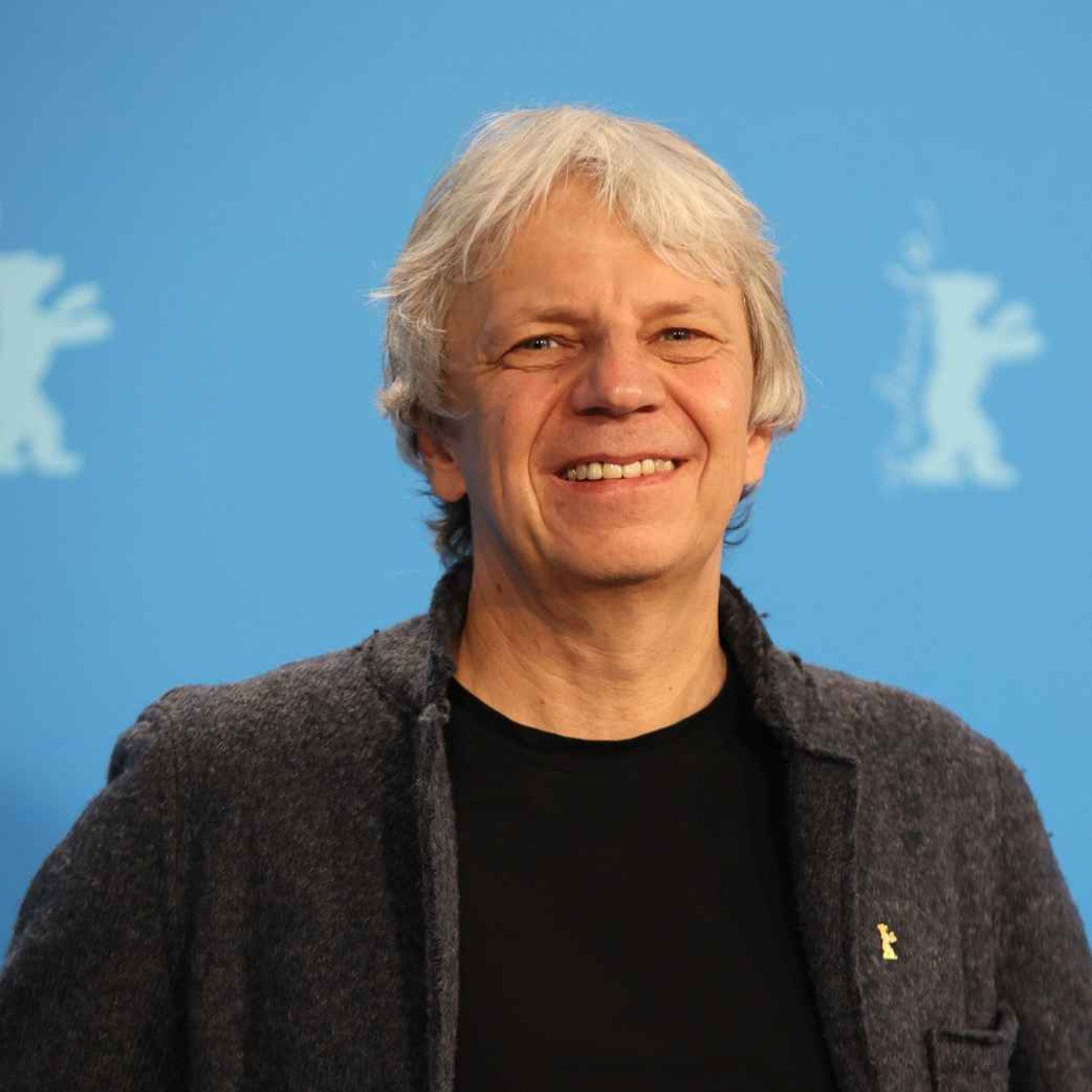
13. From Hilde, With Love Director Andreas Dresen on Beauty within a Dark Story
32:10The 2024 German Film Festival is currently underway across Australia with screenings taking place from 7 May to 5 June. The poster film for the festival is From Hilde, With Love, by director Andreas Dresen.In the following interview, Nadine Whitney and Andreas talk about his interest in telling the story of Hilde Coppi on screen. Hilde was a young German women who was drawn into the anti-Nazi resistance movement during World War Two.Andreas Dresen is in attendance at the festival as a festival guest, and will be participating in Q&A sessions at screenings of From Hilde, With Love, on Thursday 9 May at Sydney Palace Central, Saturday 11 May at Palace Cinema Como in Melbourne, and Saturday 18 May at Palace Barracks in Brisbane. For all screening times and to purchase tickets, visit GermanFilmFestival.com.au.Thank you for listening to this episode of The Curb podcast. To help keep the Curb independent, visit patreon.com/thecurbau to show your support from as little as $1 a month.
12. Shape Director Roger Ungers Talks About Body Positivity in the Gay Community in This Interview
26:04Roger Ungers is a documentarian who continually presents a new perspective on the world around us. His 2020 documentary Finding Creativity saw him explore the complex nature of creativity, and in turn, he reflects on his own creativity. That personal touch is brought to his latest documentary, Shape.This is a film about physicality and the at times exclusionary manner that the gay community can exhibit prejudice against different body types. Shape explores how a community that is often vocal about celebrating diversity can engage in body discrimination.Shape screened at the Mardi Gras Queer Film Festival in 2024. To keep track of where Shape will screen in the future, visit Roger's website: RogerThatPictures.com.au for more information.Shape will screen at Victorian Pride Centre as part of their pride month events on 19th June 2024 at 7pm. Tickets are available here.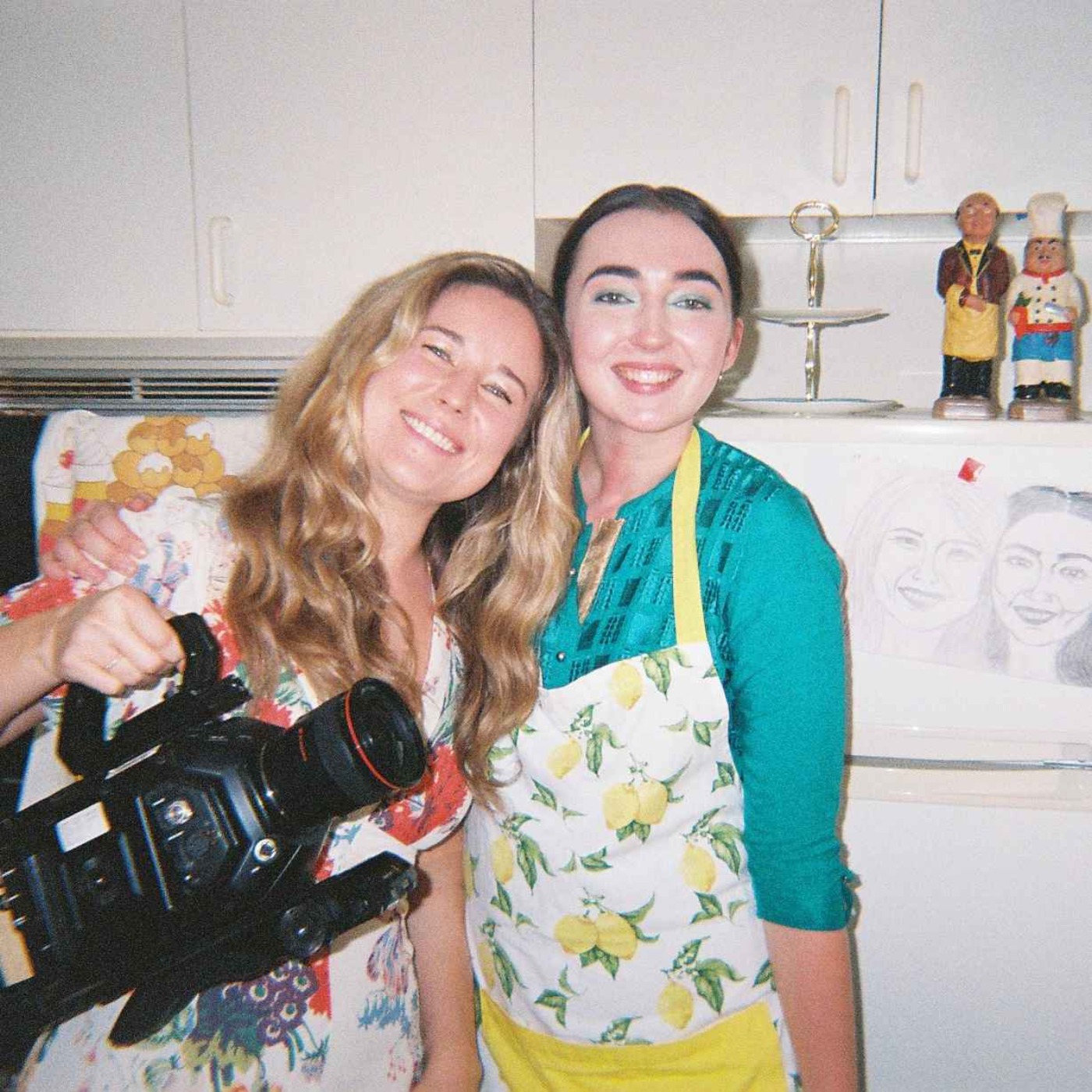
11. Katherine Grace on Working with Friend Holly Dodd on the Horror Short Alison & Betty
35:00There's something in the water in Perth that leads to a creative movement from local filmmakers who push through microbudget limitations to tell engaging and inventive stories on screen. For emerging filmmakers Katherine Grace and Holly Dodd, that drive for creativity comes in the form of working together as actors and directors on a duo of short films. For Holly, it's the short horror Consumed, a story of a young woman who suffers from sleep paralysis, while for Katherine, her short film Alison & Betty sees one friend be haunted by the presence of her distant friend Betty.As Katherine details in the following interview, working together on each others films has helped create a body of work that has been able to showcase their combined and singular talents. There's a charm and devilishness to Alison & Betty that leans into a 1950s housewife modality, flipping it on its head with an off kilter kookiness that sees Katherine and Holly bounce off each other with ease. Alison & Betty shows a talent on the rise that has me excited to see where both Katherine and Holly progress as filmmakers.To follow Katherine's work, make sure to follow her Instagram page @justamissgrace, or visit her YouTube page for more details, and Holly's Instagram page @hollyedodd to keep track of her projects. Thank you for listening to this episode of The Curb podcast. To help keep the Curb independent, visit patreon.com/thecurbau to show your support from as little as $1 a month.
10. The Road to Patagonia Director Matty Hannon Talks About Living with the Land in This Interview
20:55As a young man, Matty Hannon explored the world, sinking roots in the Southeast Asian region. Here, he made lifelong friends, became part of families, and fostered a connection with the land that was ultimately severed when he had to return home to Australia to kick off a 'career'. The towering metal structures that became the home for his monotonous office life played a major role in an emerging mental illness that saw Matty at a crossroads: continue on with this corporate career life and possibly lose a sense of himself, or seek a future where he lives with, learns from, and embraces the land that we live alongside. So begins his Road to Patagonia, the title given to Matty's documentary about his journey from Alaska to Patagonia, a 50,000km trek that sees him encountering magnificent surfing locations, wildlife of all kinds, a bond with a group of horses who help on his journey, and a romance which changes his life. The Road to Patagonia is deliberately meditative film, and as such, it becomes a soothing experience as viewers learn from the people who live with the lands Matty and his partner Heather Hillier trek along. This is not some kind of 'white cultural tourist' narrative either, as Matty and Heather never seek to become saviours or people who co-opt the lifestyles of the people they meet, instead seeking to join the wavelength of the spiritual harmony that the people they meet exude. There's an optimism to The Road to Patagonia that comes across with the way Matty Hannon talks about his life. In the following interview, Matty talks about the challenges he faced making the film, and what he has been able to implement into his modern life in the Byron Bay region. The Road to Patagonia and Matty Hannon are heading around Australia on a national tour until 19 April 2024. Head over to the Facebook page for more details. https://garage.com.au/the-road-to-patagonia/#:~:text=Synopsis,between%20humanity%20and%20the%20Earth.Thank you for listening to this episode of The Curb podcast. To help keep the Curb independent, visit patreon.com/thecurbau to show your support from as little as $1 a month.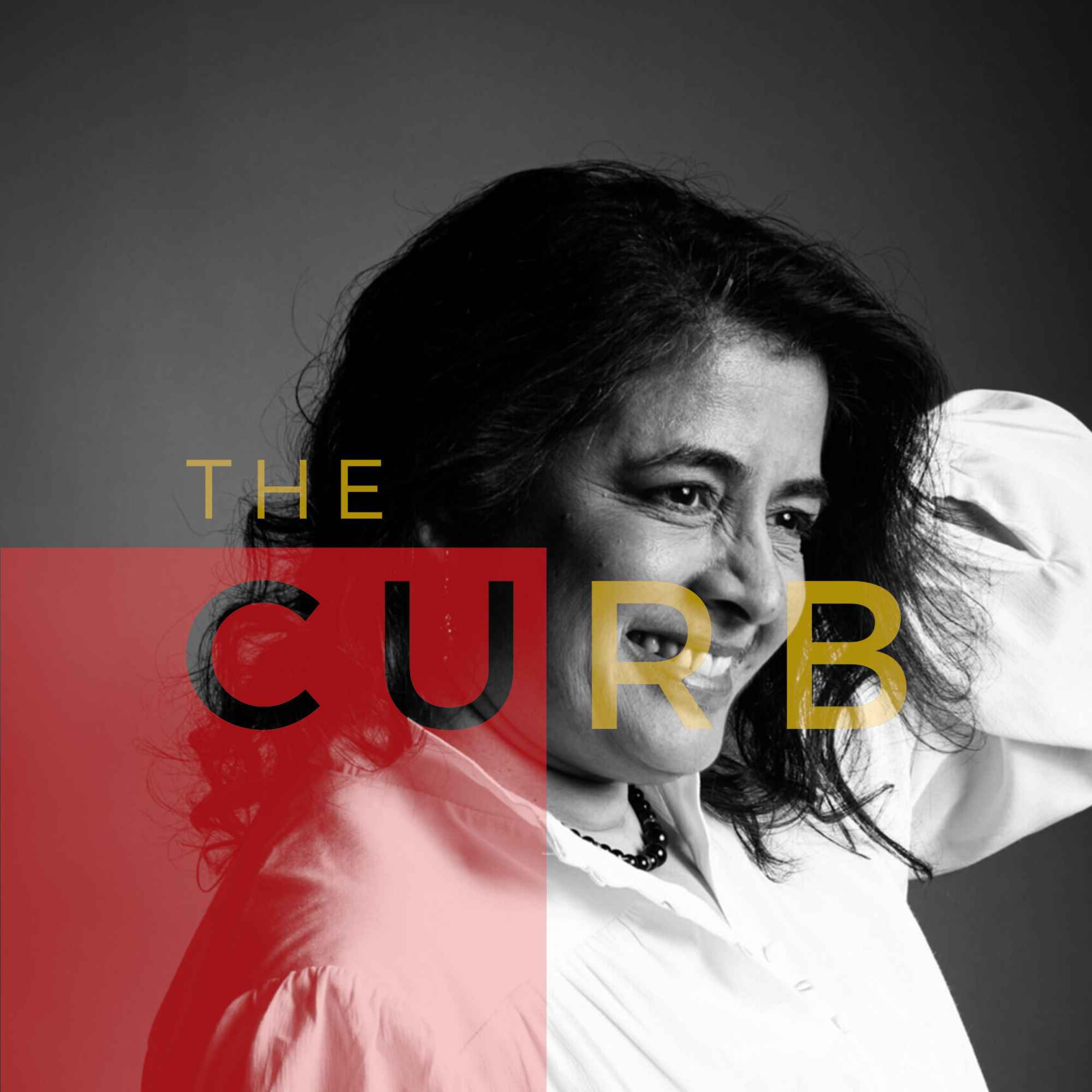
9. The Deepest Breath Composer Nainita Desai On the Art of Composing for Documentaries
55:22Nainita Desai is an award-winning composer whose work has spanned creative formats, from documentaries like The Reason I Jump where she won an Emmy for Outstanding Music Composition, to TV series like Funny Women, to video games like Telling Lies and Immortality. With over 150 credits to her name, Nainita is nothing short of prolific.In the following interview, Nainita talks about her journey into becoming a composer and how Peter Gabriel impacted her career. While we don't touch on her education in mathematics, it plays a vital role in her career as a composer, guiding her interest in sound design as well as composition. From here, our discussion leads into talking about the role of nature in her work, as heard in films like The Deepest Breath, and the 2024 Sundance award-winning film Nocturnes. In both of these films, the role of the ocean and the mountains is as important as the world of the people we are following, and Nainita talks about the way that she reflects those characters journeys in her compositions.Equally important is the role that silence plays in her work. Nainita talks about the role that silence plays as the unspoken instrument for a composer, and how important it is to relinquish the score to amplify the drama of a scene. As a flow on of this discussion point, Nainita talks about the difficulty of knowing that not all aspects of her score will end up in the final film.This wonderfully insightful conversation flows between creativity and personal journeys, with Nainita giving us an in depth look at the mind of a composer. This conversation was recorded ahead of Nainita's upcoming appearance at the Australian International Documentary Conference, which opens in Melbourne on 3 March 2024. Nainita will be presenting a discussion called The Art of Composing for Documentary with Nainita Desai, alongside moderator Emma Bortignon. As we close out this interview, I asked Nainita about the importance of being accessible for interviews and panel discussions, which leads Nainita to reflect on the role of being a mentor for emerging composers, particularly women composers. To find out more about AIDC, visit AIDC.com.au.If you enjoy this discussion, I urge you to seek out other interviews with Nainita as they have regularly been in depth and valuable insights into her art as a composer. Also visit her website nainitadesai.com for more information.
8. Daniel Monks Talks Through His Career From Pulse to In the Room Where He Waits in This Interview
01:04:09Daniel Monks is an award winning theatre and film actor who hails from Perth, Western Australia. He received an AACTA nomination for Best Actor in a Leading Role for the feature film Pulse, a story about a disabled teen who undergoes radical surgery to turn into a beautiful woman in a bid to be loved and embraced. Daniel wrote the script and worked with his close friend, Stevie Cruz-Martin, as a director. It's a film that helped launch his career as an actor in both Australia and London, where he has performed opposite Emilia Clarke in The Seagull, and where he won the Best Performer in a Play award at The Stage Debut Awards for his turn in Teenage Dick, Michael Lew's darkly comedic retelling of Richard III.When I first watched Pulse, I saw an actor who brought a complicated and conflicted character to life on screen with deep empathy and understanding. We open the discussion by talking about the origins of Pulse, leading Daniel to reflect on the almost ten-year journey between that film being shot and now. In that decade-long career path, Daniel has also starred in Australian films like Sissy, and Timothy Despina Marshall's new film, In the Room Where He Waits.His place in the world of theatre and film as a gay, disabled actor has seen him become a leader in his field, forging a path for his fellow queer and disabled actors. We talk about the weight of responsibility that often comes with the role of being a leader, while also touching on the push for diversity on stage and on screen, and how Daniel navigates that when it's often driven by non-disabled, cisgender, straight, white people.As you'll hear in the following interview, Daniel is a 'bucket list' interview guest I've been eager to talk with for years. I was fortunate to chat with Daniel's mum, Annie Murtagh-Monks, a few years ago about her work as a casting director, so it was quite wonderful to hear about the conversations that she has with Daniel about their work. Daniel also talks about the support that filmmakers like Stevie Cruz-Martin and Hannah Barlow have given him throughout his career.I recorded this ahead of the world premier of In the Room Where He Waits at the QueerScreen Mardi Gras Film Festival, where it received Queer Screen Completion Funding. This stunning drama sees Daniel play the role of Tobin, an actor who slips back home to Australia for his father's funeral. As he waits out his two week quarantine period, he is haunted by the presence of the previous tenant in the room. This riveting film sees Daniel command the screen in a way that will have you leaning on the edge of your seat - not because of how tense the film is, but simply because of how compelling Daniel is to watch. The film will no doubt screen down the line at other festivals, so please keep an eye out for it.This is a long, deep dive discussion which I'm proud to be able to share with you all. Make sure to seek out Pulse, Sissy, In the Room Where He Waits, and visit National Theatre At Home to view The Seagull.Thank you for listening to this episode of The Curb podcast. To help keep the Curb independent, visit patreon.com/thecurbau to show your support from as little as $1 a month.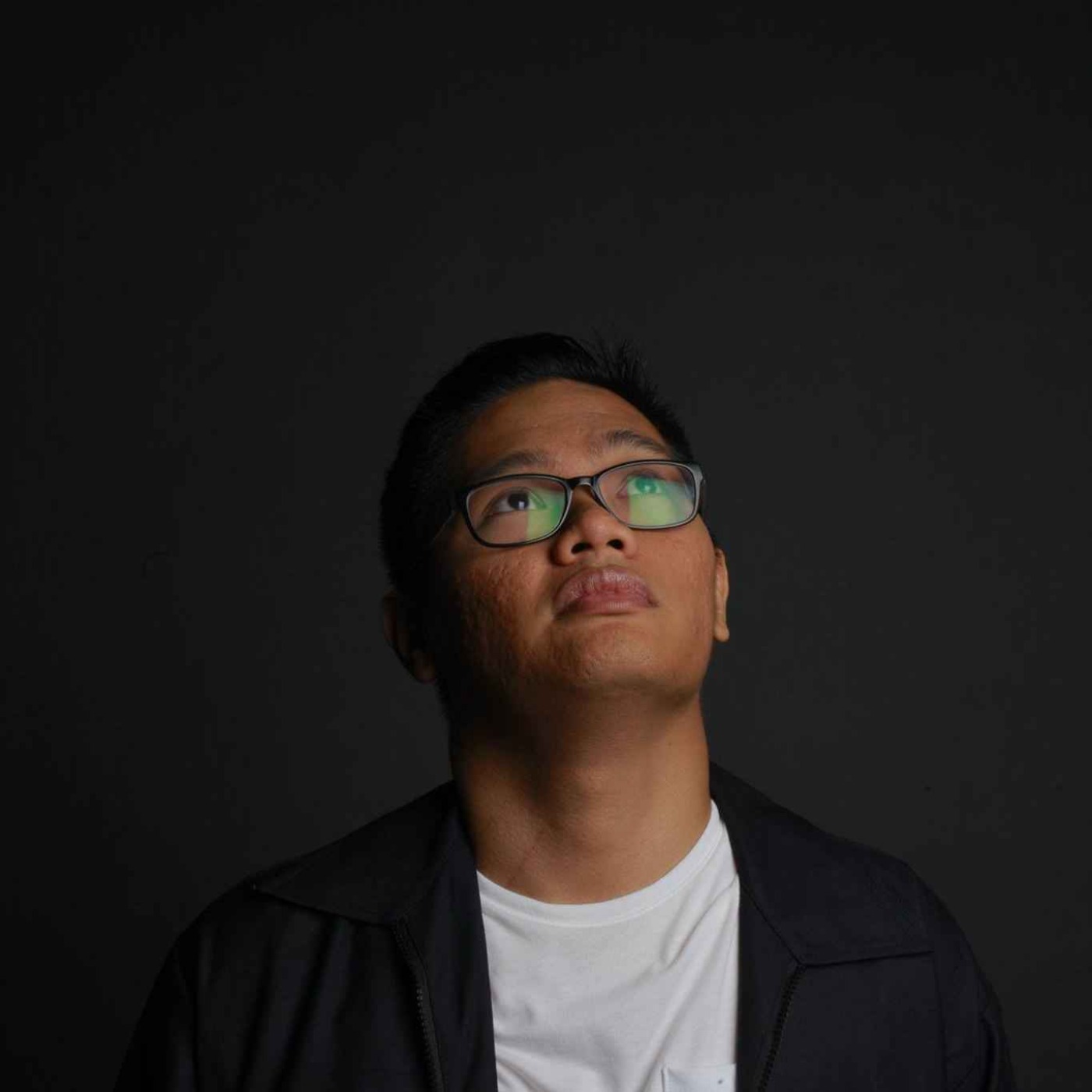
7. Carl Joseph Papa Talks About How Richard Linklater Influenced His Rotoscoped Animation The Missing in This Interview
37:20Listeners should note that the following interview contains discussions on childhood sexual abuse and trauma.Writer-director Carl Joseph Papa's The Missing follows Eric (Carlo Aquino), a young man who lives alone, maintains a crush on his coworker Carlo (Gio Gahol), and has a strong bond with his mother Rosalinda (Dolly De Leon). Rosalinda's request for Eric to check in on his uncle who they haven't heard from in some time coincides with the presence of an alien. These unexpected events cause Eric's repressed memories of trauma from his childhood to reemerge, amplifying the other aspect of his life that's causing him alarm: he's starting to lose body parts. When we first meet Eric, his mouth is missing, and then as his hold on life and reality starts to slip, other parts of his body start to go missing: an ear, a hand, and more.Narratively, The Missing is a layered and emotional experience that resonates long after the credits have rolled, but it's how Carl and his creative team use the form of rotoscope animation to create tonal and thematic layers to Eric's story that makes it all the more memorable. Eric's life is presented in a Richard Linklater-esque style of animation, but as his memories of his youth come back, they're presented with a childlike animation that represents the discovering of a creative identity. Carl then uses a smothering black border that creeps in on those memories as Eric's traumatic events stifle that sense of self and creativity that would otherwise have flourished. Equally, Carl uses the open possibilities of animation to reflect Eric's missing body parts: his hand gets replaced by a glitching png image, file not found.While animation is an open playground for creative minds, it's rarely utilised to explore the aspects of humanity and our inner-self in a way that live-action filmmaking simply cannot do. The Missing then becomes a truly unique experience that lingers because of its creativity and honesty.In the following interview, I ask Carl about where that creativity comes from, how his journey into filmmaking began, and on honouring the survivors of trauma and abuse in his work. The Missing is screening at the QueerScreen Mardis Gras Film Festival on Wednesday 21 February 2024. Thank you for listening to this episode of The Curb podcast. To help keep the Curb independent, visit patreon.com/thecurbau to show your support from as little as $1 a month.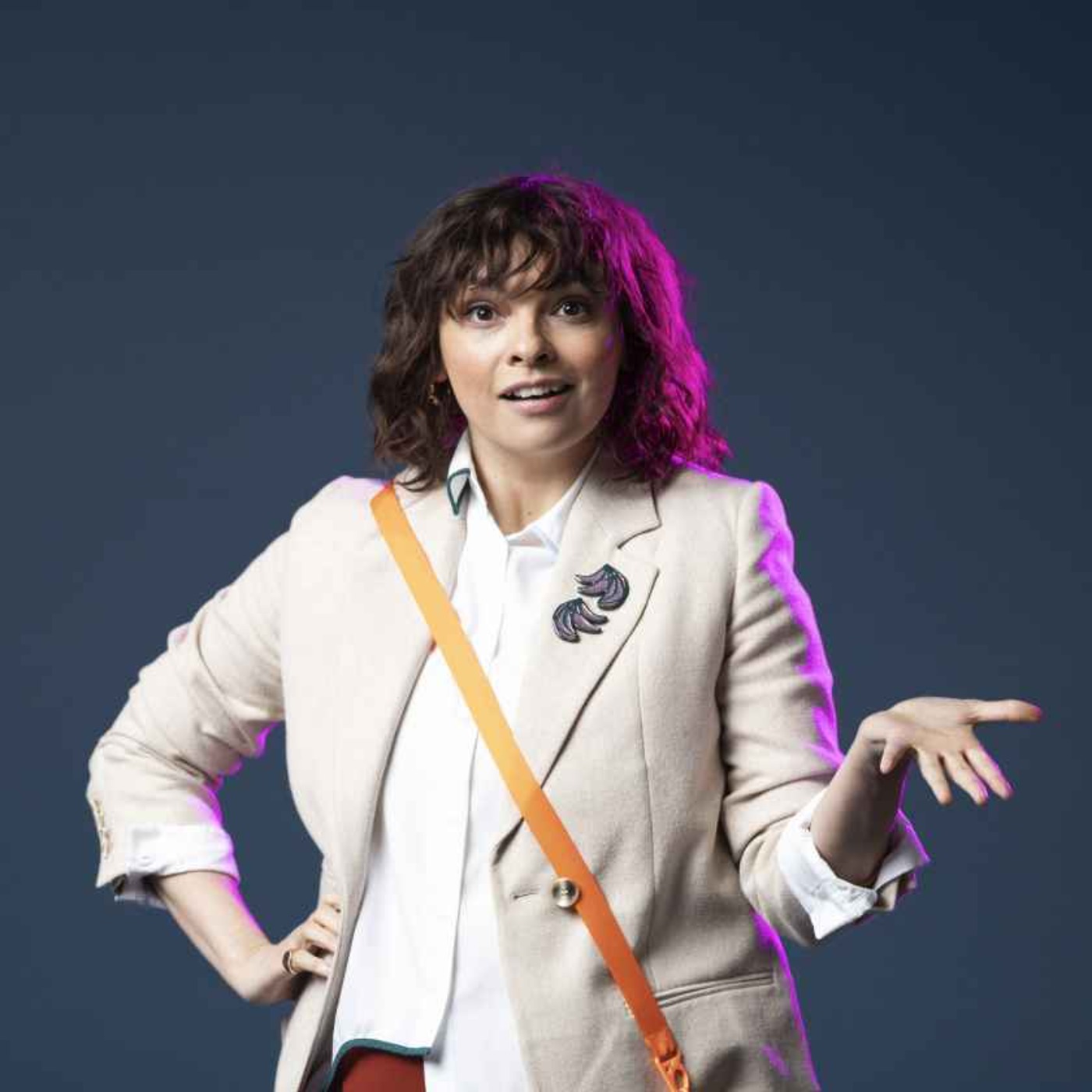
6. Carissa Lee Talks About Navigating Barriers in the Australian Arts System in This Interview
45:10Carissa Lee is a Noongar actor and writer whose work spans from critical analysis, to theatre, to the new ABC Kids series, Planet Lulin, where she plays Principal Cruz. Carissa's critical work has appeared in publications like Kill Your Darlings, IndigenousX, and Witness Performance, where her writing examined culture and the arts through an Indigenous lens. In her must read piece on Kill Your Darlings, How Acting Saved My Life, she talks about the complexity that comes with navigating class barriers both off and on stage.In the following interview, I asked Carissa about her journey into acting and how her writing has informed her work as an actor. I'm lucky with the array of people I get to interview and talk about their work with, but this chat with Carissa was a particularly enjoyable one given the way we discuss her writing and acting, while ultimately asking the question about what our national cultural identity really is. As we yarn about Carissa's work, the conversation sways into talking about identity and the expectations to become a spokesperson for your community, especially as organisations, the arts community, and society as a whole pushes towards greater 'diversity' in their workplaces.My concept of diversity is vastly different from the singular mindset that much of society has of diversity. I'm a disabled writer, and have been open about how I live with a disability in my workplace, but it's important to note that my disability is non-visible, and as such, I can't speak for the entirety of the disabled community when it comes to talking about what our lives are like. My life is vastly different from those who live with visible disabilities, yet, because I'm part of that community, I'm almost expected to talk on behalf of all disabled people. This is part of the conversation that arises, where we discuss touch on the societal expectations that come with that push towards diversity.Elsewhere, Carissa talks about what having a supportive teacher meant to her growing up, the manner that regional accents are massaged out of actors during training, and the work of Andrew Bovell, in particular his play Holy Day, which played a major role in Carissa's work as an actor. We also talk about the joy of a kids show like Planet Lulin, which is an absolute delight and sees actors like Lisa McCune dressing up in weird and wacky costumes and simply having the best time. It's the kind of show I wish I had growing up.I hope you enjoy this discussion with Carissa as much as I enjoyed running it. Read Carissa's writing here: How Acting Saved My Life and Nostalgia for a Better Future.To find out more about Carissa's work, follow her on Instagram @_carissalee or on Twitter @CarissaLeeG.
5. Robert Connolly on Why Force of Nature Was His Hardest Film Shoot Yet in This Interview
22:33Robert Connolly is one of Australia's great modern directors, having exploded onto the film scene some twenty years ago with The Bank, which was nominated for Best Picture and Best Director at the AFI awards, which he swiftly followed up with an impressive body of work that includes Paper Planes, The Turning, Balibo, Blueback, and the 2021 adaptation of Jane Harper's best seller, The Dry.That film, which featured Eric Bana as Detective Aaron Falk, set the box office afire in 2021 alongside High Ground and Penguin Bloom, with the trio making Australian film history as the first time that three Aussie flicks topped the local box office. Given the success of The Dry, it made sense that Connolly and Bana would return to Jane Harper's Falk series with the second novel, Force of Nature. Where The Dry focused on a murder mystery in the middle of nowhere, Force of Nature takes Detective Falk to the Grampians to try and find missing business woman Alice (Anna Torv). Alice did not return with her colleagues (Deborra-Lee Furness, Robin McLeavy, Sisi Stringer, Lucy Ansell) after a hiking retreat, raising suspicion and concern. With heavy rains on the way, time is of the essence to find Alice before it's too late.While Force of Nature operates in the thriller genre, with Connolly harkening back to The Bank with a subplot about manipulative financial institutions, it is better approached as a character study of people under pressure. Falk's return to the Grampians sees him recalling his youth when his mother also went missing in the same area, and it's here that Force of Nature lingers into an examination of what family means in difficult times. Eric Bana has found a character he can comfortably slip into with Detective Aaron Falk, a figure who sits alongside Detective Jay Swan and Jack Irish as a compelling investigator getting to the bottom of a mystery. It helps that Bana is comfortably supported by a reliable cast, including the always great Anna Torv who owns the film, the welcome presence of Robin McLeavy who gives a subdued and powerful performance, and solid performances from newcomers Sisi Stringer and Lucy Ansell.Curiously, even though I've been interviewing Australian filmmakers for almost a decade now, this is the first time I've had a chat with Robert Connolly. I'd previously aimed to catch up with him on the media trail for The Dry or Blueback, but circumstances meant that this was our first time chatting. As I joined the Zoom meeting, Robert immediately noticed the vast array of blurays and DVDs that sit behind me, pointing out the Agnes Varda Criterion Collection. Our conversation starts there, and ferrets through different avenues of discussion, weaving in and out about Robert's work as a filmmaker, what it means to support emerging talent in the way he does as an executive producer with films like Alena Lodkina's Petrol, Sari Braithwaite's Because We Have Each Other, and Jub Clerc's Sweet As, before we settle on discussing why Force of Nature is the hardest shoot he's embarked on yet.Force of Nature launches in Australian cinemas from 8 February 2024, and if there's one reason to see it on the big screen, it's to become overwhelmed by Andrew Commis' immersive cinematography. No doubt if this one does well that we'll see Robert adapting the third and final Falk book, Exiles, down the line.If you like what we do here at The Curb, then make sure to listen to other interviews at TheCurb.com.au, and help keep The Curb independent by joining our Patreon from as little as $1 a month at Patreon.com/thecurbau.